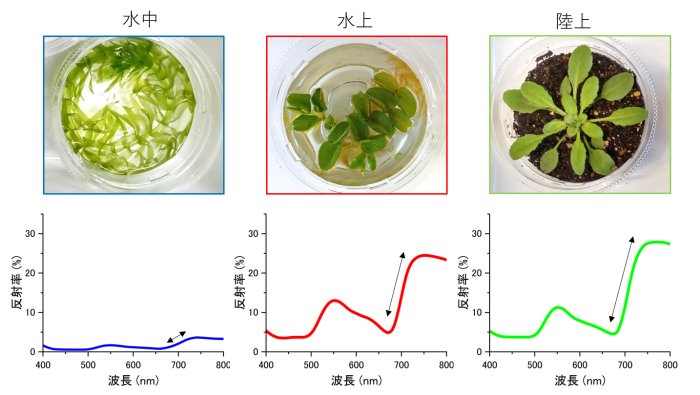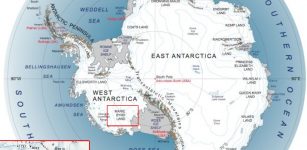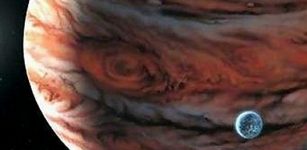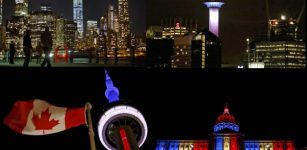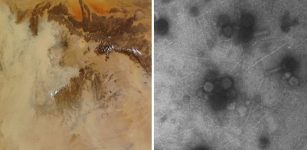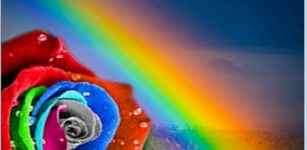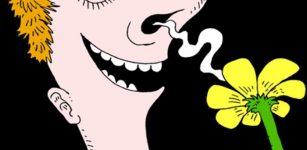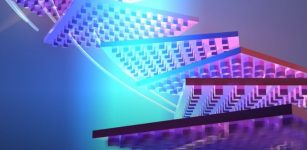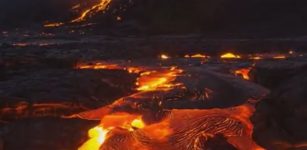Can We Find Floating Vegetation On Ocean Planets?
Eddie Gonzales Jr. – MessageToEagle.com – Recent advances in astronomical observations have revealed that there are many planets in the universe that are filled with water, just like Earth, and the search for life on these planets is about to begin.
An illustration depicting seasonal changes in floating vegetation and the resulting periodic changes in water surface reflectance. It is expected to become a novel indicator in searching for life on ocean planets.(credit: Astrobiology Center)
A research team from the Astrobiology Center/National Institute for Basic Biology, National Institutes of Natural Sciences, and the Graduate University for Advanced Studies (PhD student Aoi Murakami, Project Researcher Isamu Komatsu, and Project Associate Professor Kenji Takizawa) has verified through culture experiments and satellite observations that the reflectance spectrum of “floating vegetation,” which spreads its leaves on the water surface, may be a useful indicator for the search for life on water-rich planets.
In particular, they have clarified the importance of observing the periodic fluctuations.
Nearly 6,000 exoplanets have been discovered through astronomical observations to date, and many have been reported as habitable planets, which are expected to have liquid water on their surfaces. The search for life in space is one of the most important scientific projects of this century, and preparations are underway to directly image habitable planets.
On planets with environments similar to Earth, it is expected that the characteristic reflectance spectrum (red edge) of terrestrial plants can be detected as an indicator of life (biosignature), but on planets with more water than Earth and most of the surface covered by ocean, the development of terrestrial vegetation similar to that on Earth cannot be expected. In order to expand the possibility of life exploration on ocean planets with an abundance of water essential for the birth of life, this study examined the characteristics of the reflectance spectrum of plants floating on the water surface and the possibility of detecting it.
In this study, we investigated the reflectance spectra of floating plants at different scales, from measurements of individual leaves in the laboratory to measurements of lake vegetation using satellite remote sensing, and clarified their characteristics.
Figure 1. Comparison of reflectance when plants of different habitats are observed from above. Submerged aquatic plants (left: Egeria densa) are strongly influenced by water, so their reflectance is smaller than that of terrestrial plants (right: Arabidopsis thaliana). Floating plants (center: Salvinia molesta) show reflectance close to that of terrestrial plants, and a pronounced red edge (arrow in graph) can be seen.
Although the morphology of floating leaves varies greatly depending on the species, they generally show a red edge equal to or greater than that of terrestrial plants. The red edge is thought to be accentuated by mesophyll tissue that contains a lot of air to increase buoyancy, and by epidermal structures that increase water repellency. When measuring the reflectance of leaves floating on water, the reflectance decreases slightly when the leaves get wet, but a more pronounced red edge can be seen compared to submerged aquatic plants (Figure 1).
However, in large-scale observations in actual natural environments, the red edge of floating vegetation, which has a low population density and spreads its leaves without overlapping the water surface, is lower than that of dense terrestrial vegetation. When comparing the size of the red edge using the normalized difference vegetation index (NDVI) as an index from reflectance images obtained by satellite remote sensing (Sentinel-2; ESA), floating vegetation in lakes and ponds showed lower values than the surrounding forest vegetation. In Japan, which is in the temperate zone, developed floating vegetation exists only in summer and disappears in winter, so when averaged over the year, the NDVI becomes even smaller and more difficult to detect. On the other hand, the fluctuation range of the minimum and maximum values of NDVI was more pronounced in floating vegetation than in forest vegetation.
Therefore, focusing on the periodic fluctuation of NDVI, a large-scale analysis was conducted on 148 lakes and ponds throughout Japan, and a characteristic seasonal fluctuation pattern of floating vegetation, which changes from negative to positive in winter and summer, was confirmed (Figure 2). Although the reflectance of floating plants decreases when they become wet, it is believed that the increase or decrease in vegetation was detected with high sensitivity because the reflectance of the water itself is lower and more stable.
The seasonal variation of NDVI due to floating vegetation is less susceptible to attenuation by the atmosphere and clouds than when simply comparing the maximum NDVI value as an index, suggesting that this could be an effective method for future exploration of life outside the solar system.
If the evolution of photosynthetic organisms such as plants that float on the water surface is common on planets other than Earth, then we can expand the candidate planets for life exploration using plant reflectance spectra to include ocean planets with more water, rather than limiting them to planets with continents like Earth.
In order to predict the forms of life that will evolve to adapt to various planetary environments, it is important to elucidate the birth and evolution process of life in coevolution with planetary environments.
Written by Eddie Gonzales Jr. – MessageToEagle.com Staff Writer


